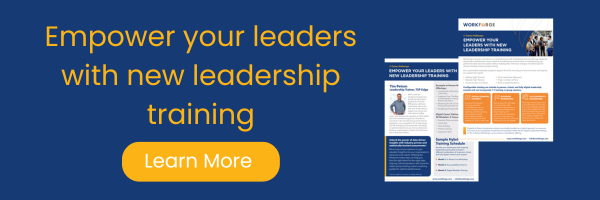Many organizations want to promote from within. It makes sense. It improves engagement, as people see the opportunity for career growth and it retains the institutional knowledge that would often take years to replace. In theory, It is a win-win for everyone involved but in practice, it often yields the opposite results.
This is because of one key mistake. Companies tend to promote their best individual performers and forget to tell them that their jobs have fundamentally changed. While they were likely promoted for doing the work with excellence, their job is now to inspire greatness in others. Without this conversation, all too often, those once high performers become tired of the heroics it takes to win each day. Over time this leads to burnout of the leader and a disengaged team. There is a better way. Here are three ways to prepare your high performers to transition to great leaders.
1. Provide clarity: Communicate the change in expectations for people leadership positions. This involves outlining the shift from individual contributions to leading teams, fostering collaboration, and driving collective success. Organizations should also establish clear success metrics for leadership roles, different from those for individual contributors. This helps new leaders understand their responsibilities and aligns their actions with organizational goals.
2. Provide leadership training: Investing in comprehensive leadership development programs is crucial. These programs should focus not only on skills related to leading people and projects but also on developing emotional intelligence, conflict resolution, and strategic thinking. High performers often excel in their technical or functional roles but might need some support in the more nuanced skills of high-performing leadership. Tailored training programs that include workshops, mentoring/coaching, and real-world leadership exercises are vital in this transition.
3. Regular feedback and support: According to research by organizational psychologist Tasha Eurich, 95 percent of people think they’re self-aware, but only 10 to 15 percent actually are. Regular feedback and support are essential for leaders to understand what is working, what is not, and what to do about it. This includes feedback from their team as well as their leader. The feedback should occur regularly, no one benefits from withholding feedback until the formal review.
By following these steps, promoting from within improves engagement, lowers turnover, and improves productivity, giving your organization a competitive edge in both the talent and product marketplace.
About the Author:
Tim is an executive who specializes in culture and leadership development. He began his career at EY as a CPA, then realized the true potential of culture and leadership as the COO at a gourmet food manufacturer. He joined Barry-Wehmiller to pursue his passion for creating a better world through relationships. He founded TSP Edge, LLC to focus on that purpose, helping clients and individuals move to the next level of their journey through a combination of partnerships, data, and interactive leadership development experiences. WorkForge is proud to partner with Tim to provide leadership training across food manufacturing.
Tim was a recent guest on our Chewing the Fat Podcast, check out Episode 6, "From performer to leader" to learn more from Tim.
